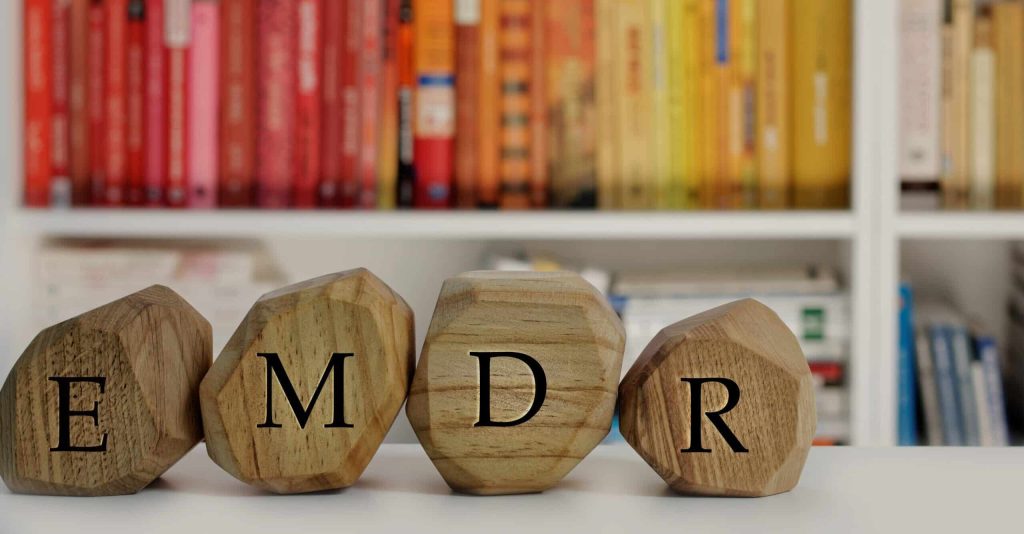Transformative Healing through EMDR Therapy
At The Meadowglade, we prioritize staying on top of scientifically proven methods of therapy that are beneficial to our clients. One of the latest therapies in the mental health space would be the wonders of Eye Movement Desensitization and Reprocessing (EMDR) and Accelerated Resolution Therapy (ART) — specifically in deep rooted trauma.
EMDR and ART therapy have many benefits when it comes to helping clients through trauma. Learn more about this technique from The Meadowglade’s Primary Therapist, Alyssa Bedford, in our interview below.
- Many people aren’t familiar with EMDR; as a therapist experienced in both EMDR and Accelerated Resolution Therapy (ART), can you explain how these therapies, which utilize the power of eye movements, effectively help clients heal from trauma and adverse experiences?
EMDR and Accelerated Resolution Therapy (ART) use rapid eye movements to process trauma, it addresses the thoughts, images, and beliefs associated with a negative event and the emotions and sensations attached to it. It works with the knowledge that our memories are not only recalled but they are experienced. EMDR allows for flexibility to use other methods of bilateral stimulation such as tapping or holding sensors in your right and left hand. The important component is utilizing the right and left side of your brain in healing trauma. ART relies on rapid eye movements for processing trauma and addresses associated images and sensations. It utilizes an evidenced-based protocol of image replacement which enables people to keep the knowledge but lose the pain. The science of why eye movements work in trauma processing is not fully understood, but it replicates the body’s natural process during REM sleep.
“Simply put at the Meadowglade, the best care is our standard care.”
– Alyssa Bedford
- Many people consider EMDR to be a trendy therapy, yet it’s not widely available. How does The Meadowglade’s provision of EMDR set it apart from other mental health service providers, and how does this availability benefit clients who are seeking support for mental health, substance abuse, and eating disorders?
I can understand why you would say EMDR is a trendy therapy because we hear so much about it now. However, in my mind, the word “trendy” implies a fad and that may be misleading. There is a tremendous amount of empirical evidence that supports EMDR as one of, if not the most effective way, for treating trauma and adverse experiences. It requires special training to be an EMDR Practitioner with advanced training to become certified. The Meadowglade earnestly seeks to support therapists in this extension of training to ensure our clients receive the best care possible with proven methods for treating trauma. Simply put at the Meadowglade, the best care is our standard care.

- EMDR is often discussed as a therapy that can be more effective in person. Could you delve into the reasons why EMDR benefits from face-to-face sessions and how this hands-on approach supports clients in their recovery journey?
Evidence shows that EMDR is effective through telehealth. However, it is my opinion that in a clinical setting such as The Meadowglade, where clients are struggling with complex trauma that is impacting their ability to function in life, it is very helpful to have a face-to-face approach. EMDR is used with other therapies such as narrative therapy, Ego States, Gestalt Therapy and CBT. As an EMDR practitioner, I can discern and observe recurrent themes that may present as unstated issues for my clients. Rather than referring clients out for EMDR, I can seamlessly incorporate this into the therapeutic process in agreement and partnership with the client.

- The Meadowglade is known for its secluded and relaxing setting in Moorpark, CA. How do serene and tranquil environments enhance the therapeutic experience for clients undergoing EMDR and other treatments for mental health, substance abuse, and eating disorders?
Unlike other therapeutic modalities, EMDR does not include homework. We understand that the process of EMDR continues after the client leaves the session, sometimes for days afterward. Having a peaceful, tranquil environment is conducive to the healing that continues to occur.
- You’ve mentioned that EMDR and ART work with the nervous system, emphasizing that memories are not just recalled but experienced. Could you elaborate on the significance of this aspect and give a specific example of how it has contributed to the success of a client in their healing journey at The Meadowglade?
Imagine a person walking in the park and suddenly they perceive a snake in their pathway. Immediately their nervous system responds to either a flight or a frozen response to protect them from any danger. Their perception triggers the brain to dump fear hormones into the blood stream. Perhaps their heart began to pound. Maybe their voice lets out a scream. Their breathing may have quickened. Their palms became sweaty – all within seconds. A moment later, they recognize this snake is only a stick thus sending an “all clear” message to the brain which sends different messages to their nervous system.
Their heart rate and breathing start to slow because the nervous system begins to calm. The point is the brain perceived a threat and reacted whether the threat was real or not. Now imagine if this same person had been bitten by a snake at some earlier time in their life, their reaction to the stick would likely have been considerably larger and maybe even bring on a panic attack. The distress related to the perceived threat begins to drive behavior. The person may begin to avoid walks in the park. They might jump at cicada bugs that mimic the sound of a rattlesnake. They may even panic if they see a snake in a movie.
These new events trigger the old events to be experienced in the present moment. EMDR addresses neural networks of associated memories, targeting thoughts, images, cognitions, emotions and sensory information that have gotten stuck in maladaptive ways to help people process them so that they can function in life with greater ease and without the distress that results from being triggered. Many of our clients have recovered from complex PTSD as they work through experiences of physical/emotional abuse, sexual trauma, grief and loss and abandonment to name a few. I highly recommend EMDR and ART as an effective way for treating trauma and moving forward in recovery.
Alyssa is a highly talented and sought-after therapist that has been with The Meadowglade for over two years and works tirelessly to help clients enrich relationships with themselves, family, and friends. We thank Alyssa for her time and appreciate the great work she does with our clients at The Meadowglade. For more information on different types of therapies or treatment programs, reach out to our team today, so we can support you and your family through any mental health challenges.

